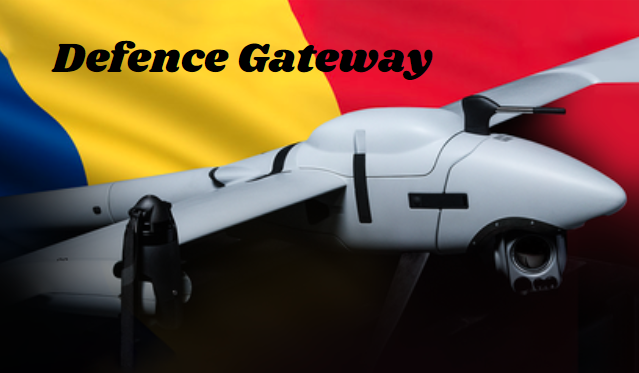Introduction to CFBWH
The aviation industry has undergone significant advancements over the years, with numerous innovations contributing to the evolution of aircraft technology. One such innovation is CFBWH, a term that is increasingly becoming pivotal in aviation circles.
This article aims to provide a comprehensive and informative exploration of CFBWH, surpassing the quality of existing online sources, and optimized for Google search to target audiences in the USA.
Understanding CFBWH
What is CFBWH?
CFBWH stands for Composite Fiber-Based Wing Hardware. It represents a cutting-edge approach in the design and manufacture of aircraft wings, utilizing composite materials to enhance performance, reduce weight, and improve fuel efficiency. This innovative technology is revolutionizing the way aircraft wings are constructed, offering numerous benefits over traditional materials.
The Importance of CFBWH in Modern Aviation
CFBWH is crucial in modern aviation for several reasons:
- Weight Reduction: Composite materials used in CFBWH are significantly lighter than traditional metal alloys, leading to substantial weight savings.
- Fuel Efficiency: Lighter aircraft consume less fuel, which is both economically and environmentally beneficial.
- Strength and Durability: Composite materials offer superior strength and resistance to fatigue and corrosion compared to metals.
- Design Flexibility: CFBWH allows for more innovative and aerodynamic wing designs, improving overall aircraft performance.
The Evolution of Aircraft Wing Technology
Traditional Wing Construction
Historically, aircraft wings were constructed using metal alloys such as aluminum. These materials were chosen for their strength and relatively light weight. However, they also posed challenges, including susceptibility to corrosion and metal fatigue, leading to increased maintenance costs and potential safety issues.
Introduction of Composite Materials
The introduction of composite materials in the late 20th century marked a significant shift in aircraft construction. Composites, made from a combination of materials such as carbon fibers and epoxy resin, offered superior properties, including higher strength-to-weight ratios and greater resistance to environmental factors.
The Rise of CFBWH
CFBWH represents the latest advancement in composite material technology. By focusing on composite fiber-based hardware specifically for wing construction, CFBWH maximizes the benefits of composites, resulting in lighter, stronger, and more efficient aircraft wings.
Advantages of CFBWH
Enhanced Performance
CFBWH enhances aircraft performance in several key areas:
- Aerodynamics: Composite materials allow for more streamlined and aerodynamic wing designs, reducing drag and improving fuel efficiency.
- Weight Savings: The reduced weight of composite materials leads to lower fuel consumption and increased payload capacity.
- Strength and Durability: Composite wings are less prone to damage from environmental factors, reducing maintenance needs and increasing the lifespan of the aircraft.
Environmental Benefits
The use of CFBWH contributes to environmental sustainability in aviation:
- Reduced Emissions: Lighter aircraft consume less fuel, resulting in lower carbon emissions.
- Recyclability: Many composite materials used in CFBWH can be recycled, reducing waste and promoting a circular economy in the aviation industry.
Economic Benefits
Airlines and aircraft manufacturers can realize significant economic benefits from CFBWH:
- Lower Operating Costs: Reduced fuel consumption leads to lower operating costs for airlines.
- Longer Aircraft Lifespan: The durability of composite materials extends the operational life of aircraft, reducing the need for replacements.
- Reduced Maintenance Costs: Composite materials are more resistant to wear and tear, leading to lower maintenance costs over the life of the aircraft.
Applications of CFBWH in Modern Aircraft
Commercial Aviation
In commercial aviation, CFBWH is being increasingly adopted in the construction of new aircraft models. Major aircraft manufacturers, such as Boeing and Airbus, are incorporating composite fiber-based wing hardware in their latest designs to improve fuel efficiency and performance.
Military Aviation
The military aviation sector also benefits from CFBWH technology. The lightweight and durable nature of composite materials makes them ideal for military aircraft, which require high performance and resilience in demanding environments.
Private and Business Aviation
Private and business aviation sectors are not left out of the CFBWH revolution. High-performance private jets and business aircraft are leveraging composite wing technology to offer superior performance, range, and efficiency.
Challenges and Considerations in CFBWH Implementation
Manufacturing Challenges
Despite its many benefits, the implementation of CFBWH poses several manufacturing challenges:
- Complexity: The manufacturing process for composite materials is more complex than for traditional metals, requiring specialized equipment and expertise.
- Cost: The initial cost of composite materials and the associated manufacturing processes can be higher than for traditional materials.
- Quality Control: Ensuring consistent quality and performance of composite materials requires rigorous testing and quality control measures.
Regulatory Considerations
The adoption of CFBWH must also navigate various regulatory considerations:
- Certification: Aircraft incorporating CFBWH must meet stringent certification standards set by aviation regulatory bodies such as the FAA and EASA.
- Safety Standards: Ensuring the safety and reliability of composite materials in aviation applications is paramount, requiring ongoing research and development.
Market Acceptance
Market acceptance of CFBWH is another important factor:
- Education and Awareness: Educating stakeholders, including airlines, pilots, and maintenance crews, about the benefits and handling of composite materials is essential.
- Customer Confidence: Building customer confidence in the safety and reliability of aircraft with composite wings is critical for widespread adoption.
The Future of CFBWH in Aviation
Advancements in Composite Materials
The future of CFBWH is closely tied to advancements in composite materials. Ongoing research and development are expected to yield even lighter, stronger, and more durable composites, further enhancing the benefits of CFBWH.
Integration with Emerging Technologies
CFBWH will likely be integrated with other emerging technologies in aviation, such as:
- Electric and Hybrid Propulsion: The weight savings from CFBWH can complement the adoption of electric and hybrid propulsion systems, further reducing emissions and improving efficiency.
- Autonomous Flight: Advanced composite wings can support the development of autonomous aircraft by providing superior performance and reliability.
Expanding Applications
The applications of CFBWH are expected to expand beyond traditional aircraft to include:
- Unmanned Aerial Vehicles (UAVs): The lightweight and durable nature of composite materials makes them ideal for UAVs, which require high performance and long endurance.
- Spacecraft: Composite materials are also being explored for use in spacecraft, where weight savings and durability are critical.
FAQs About CFBWH
What does CFBWH stand for?
CFBWH stands for Composite Fiber-Based Wing Hardware, a technology that utilizes composite materials in aircraft wing construction to enhance performance, reduce weight, and improve fuel efficiency.
What are the main benefits of CFBWH?
The main benefits of CFBWH include weight reduction, improved fuel efficiency, enhanced strength and durability, design flexibility, environmental sustainability, and economic advantages such as lower operating and maintenance costs.
Which sectors are adopting CFBWH technology?
CFBWH technology is being adopted across various sectors, including commercial aviation, military aviation, and private and business aviation. It is also being explored for applications in UAVs and spacecraft.
What are the challenges in implementing CFBWH?
The challenges in implementing CFBWH include manufacturing complexity, higher initial costs, quality control requirements, regulatory certification, and market acceptance.
How does CFBWH contribute to environmental sustainability?
CFBWH contributes to environmental sustainability by reducing fuel consumption and emissions due to the lighter weight of composite materials. Additionally, many composite materials used in CFBWH can be recycled, promoting a circular economy in the aviation industry.
Conclusion
CFBWH represents a significant advancement in aircraft technology, offering numerous benefits in terms of performance, efficiency, and sustainability. As the aviation industry continues to evolve, the adoption of composite fiber-based wing hardware is set to play a crucial role in shaping the future of flight.
By understanding the intricacies of CFBWH and its potential applications, stakeholders in the aviation industry can better navigate the challenges and seize the opportunities presented by this innovative technology.





















+ There are no comments
Add yours